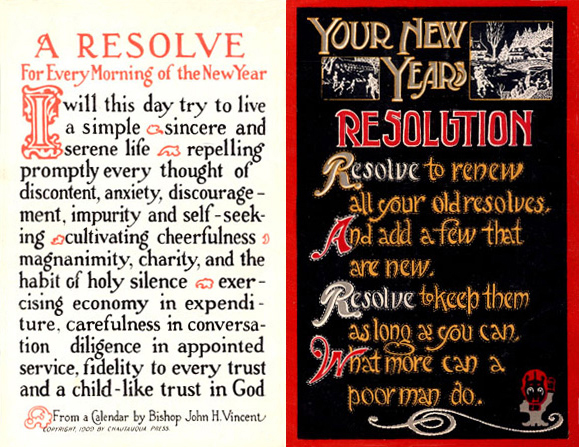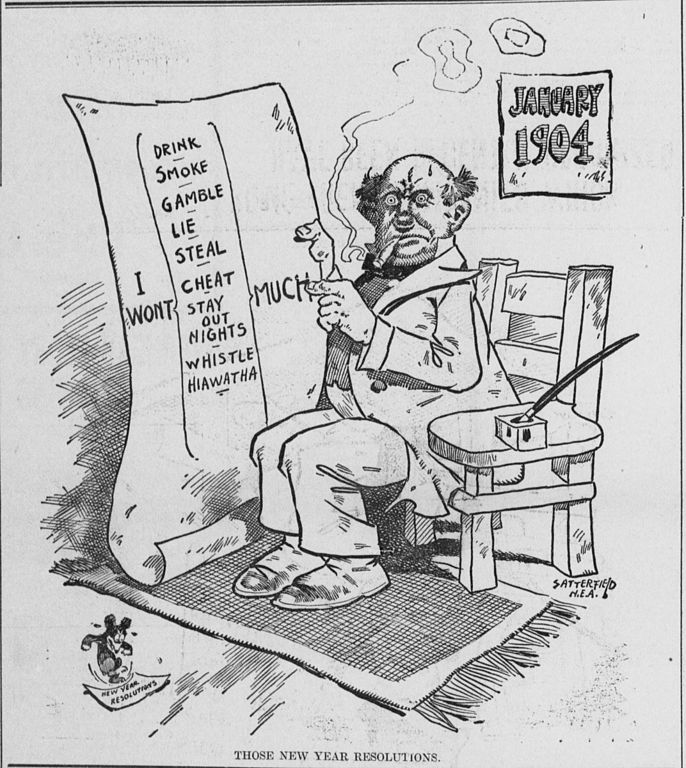
By Meghan E. Gattignolo
New Year’s resolutions sometimes get a bad rap. Maybe it’s because announcing a grand resolution gives people an annoying air of self-importance; maybe it feels pointless, knowing life’s priorities will make achieving anything new impossible; or maybe it’s because you hate it when your local gym gets crowded every first week of January.
Caught up in the excitement and fervor of a fresh year, it’s easy to set new goals, but not so easy to accomplish them. According to a poll conducted by Forbes, the average New Year’s resolution survives for just a little over 3 months before the resolution-setter burns out.
Come January 1, don’t judge your new gym-mates too harshly. Resolution-setting is not a modern trend or fad, but actually an ancient ritual. The reason behind why we continue on with resolutions is a healthy demonstration of a human superpower.

A reproduction of the Fasti Antiates Maiores, a painted wall-calendar from the late Roman Republic
CC BY-SA 4.0
Ancient Roots
Committing to a resolution for the new year can be traced all the way back to the Babylonians. An agricultural society with a trade economy, farmers often promised to give back borrowed tools at the start of every new year. They would also make promises to their deities as a demonstration to the divine that they could be trusted at their word.
For the Babylonians, the new year started near the spring equinox – in the modern month of March. Their fresh starts were linked to the change of the weather from cold to warm, and getting ready for planting season.
The Romans carried on this legacy, even when they switched over to the Julian calendar. The months changed to the names we’re now familiar with, January becoming the first month. January is named for the Roman god Janus, the god with two faces – one looking forward to the future, and one reflecting on past deeds. Janus is symbolic of new beginnings, introspection, and resolutions.

Early 20th century New Year’s postcards
Modern Popularity
Through common practice, resolution-making survived the long years between the Babylonians to today. Medieval knights used to make “peacock vows” prior to the new year to reaffirm their chivalric commitments. From the 17th century on, the instances of recorded resolution-setting only increased in frequency.
In a diary entry written on January 2, 1670, a woman named Anne Halkett recorded a list of Bible-influenced pledges in her diary that she titled “Resolutions.” In 1740, John Wesley of Methodist fame began a religious custom of hosting a special service on New Year’s Day as an alternative to partying too hard. In 1813, a Boston newspaper article featured the first recorded instance of the phrase “new year resolution.”
Until quite recently, resolutions were largely religious-oriented as most people prioritized spiritual goals. A shift occurred sometime in the mid-20th century. Resolutions became more aspirational and focused on tangible self-improvement. Today, the most common resolution involves some kind of health goal, primarily weight loss. Coming in second is a goal focused on finance.

Bob Satterfield cartoon, January 1904
Reasons for the Season
For a custom to have survived for so long – about 4,000 years, actually – a good reason must exist to explain why we continue to participate. One reason making resolutions may have endured for so long is down to a personality trait psychologists call self-efficacy.
According to verywellmind.com, self-efficacy is “a person’s belief in their ability to complete a task or achieve a goal.” Self-efficacy informs your confidence levels and your self-esteem. High self-efficacy means you feel good about your ability to achieve a goal or an obstacle. If you have low self-efficacy, you may give up easily.
As with most things, self-efficacy becomes stronger with practice. Maybe that’s what New Year’s resolutions are really all about. Setting a goal strengthens resolve, and proves to yourself that you can, in fact, do hard things.
Human beings are the only known creatures to possess self-efficacy. We’re the only life form able to visualize a future that doesn’t yet exist, and then work towards making that vision real. When it comes down to it, all people are optimists who know a chance for a restart is waiting just around the corner, and we have been for a very long time.
Happy New Year!
References
https://www.almanac.com/history-of-new-years-resolutions
https://www.history.com/news/the-history-of-new-years-resolutions
https://www.verywellmind.com/what-is-self-efficacy-2795954
https://www.merriam-webster.com/wordplay/when-did-new-years-resolutions-start
https://www.forbes.com/health/mind/new-years-resolutions-statistics/

Meghan E. Gattignolo is a freelance writer and longtime Clarksville, TN resident. She loves to obsess about historical subjects and annoy her family daily with unsolicited random facts. Meghan holds a History B.A. from Austin Peay State University and lives in town with her husband and two daughters.